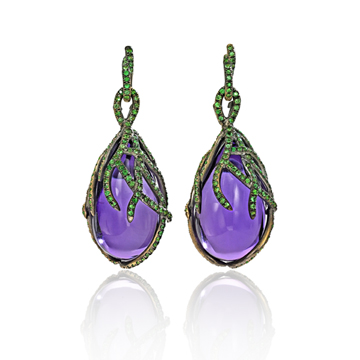Luxury brands + social media

The rapid rise of the internet seemed to take large segments of the fashion industry by surprise. Witness this quote from Liz Jones of the Daily Mail in 2011.
“A decade ago, I went to a fashion conference in Paris. Glenda Bailey, then editor of U.S. Marie Claire and now editor of Harper’s Bazaar, gave a lecture. She had lots of whizzy slide shows to demonstrate that, one day, women would buy their clothes online, even click on an internet page of a magazine and voila!
We heckled, we laughed. Bah! It will never, ever happen. But it did, of course, and buying clothes and accessories online is the fastest growing sector in the marketplace.”
Now, many luxury brands are facing the same issue when it comes to social media. It’s a tricky area for companies whose appeal is all about exclusivity and privilege.
This post looks at luxury brands who are doing it right, and one brand that is rather disastrously getting it wrong.
Louis Vuitton – engaging fans, not just customers
Luxury brands need to distinguish between those who regularly buy their products, and those who aspire to buy their products. Look at Louis Vuitton for instance.
Not many people can afford to shop there regularly, but many see the brand as a byword for quality and luxury, and will save up to buy one special piece. Which group are more powerful brand advocates? It’s the latter one – the fans who spread the word.
Social media campaigns need to be attractive to this group. The messages need to be imbued with the brand values, but also have a viral aspect to make them shareable.
Louis Vuitton did this with the opening of their London flagship store. The event was super exclusive, but it was live-streamed on Facebook with guest interviews done by Alexa Chung. Anyone could watch.
They’re also good at creating shareable bits of mini-content, designed to showcase different product categories. They’ve made an animated video about their history of making games, and one to promote their Mini Icons handbag collection.
Cartier – Create something beautiful and make it easy to share
Luxury brands making hugely expensive adverts is nothing new in itself. But what Cartier did with their “L’Odyssée de Cartier” film was canny.
It’s a work of art that took more than 2 years to make, and that grabs your attention with sheer ostentatiousness. It’s not about creating community or trying to relate to customers, it’s a bold brand statement that encapsulates who they are.
What’s clever about this is that Cartier have understood that if you want people to share something, it has to be pretty special. It’s not about Facebook likes or retweets, it’s about powerful content that people share because they’re blown away by it and want to watch it over and over.
But they didn’t just make an amazing film, screen it once, and leave it there. As well as buying television and cinema space around the world, they extended their reach to social.
They put the ad on their Youtube channel and bought a front-page takeover ad to promote it. They set up a Facebook sponsored stories to go with a dedicated fanpage. The campaign also has its own website. By doing this, Cartier made it easy for people to discover and share (of course, having an enormous budget helps).
Wendy Brandes Jewelry – be honest with your customers
Wendy Brandes is a New York based designer selling beautiful high-end jewellery, and it’s fair to say, she has a marketing budget slightly smaller than Cartier’s. But with times tough for small designers and the price of gold rising all the time, she turned to social media to promote her products – more specifically, blogging. As she says in this interview:
When I started blogging in 2007, a lot of experts in luxury goods and/or public relations told me that social media would ruin my business. They said I was being too accessible and that high-end goods needed to seem out of reach or they’d lose their cachet…And, of course, all the luxury-goods companies have since decided that relating to their customers is a good thing.
Wendy shares everything about her jewellery, from her inspiration, to how she designs it, even exactly why it costs what it does. She showcases customers who’ve bought products and promotes new pieces.
Again, as with Cartier, people are drawn to the brand because of the great content. The blog is an engaging read, not just a marketing tool, so people actually want to read it.
How NOT to do it – a cautionary tale from Yves Saint Laurent
I’m sure you’ve read this infamous Business of Fashion article by now. It’s all about the overbearing YSL PR team attempting to control every last detail of how they’re referred to on social media.
This old school way of doing things is no longer an option. Luxury brands need to let go of the need to micro-manage their image. They can control their own content, but not the way people react to it.
Yves Saint Laurent also have over a million followers on Twitter, but their tweets are terrible. An infrequent stream of ALL CAPS promotional messages, they’ve really missed the point of the medium.
Two key things for luxury brands to remember:
1. Create interesting, shareable content that resonates with your brand message.
2. Make it easy for people to share your work, and don’t try and control every aspect of the conversation.






